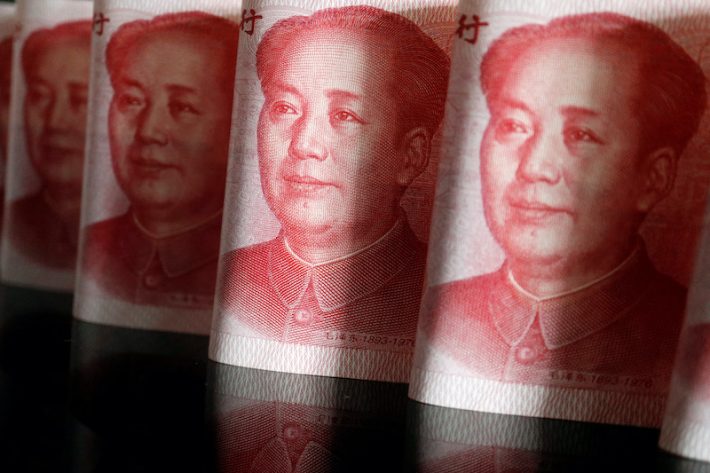China’s yuan was on course to record its largest annual loss since 1994 after another year of Covid shutdowns and restrictions, and with a new wave of infections clouding the outlook for recovery.
The Chinese currency firmed against the US dollar on Friday, but still looked set to post its biggest annual loss in nearly three decades with the world’s second-largest economy still reeling from the impact of the Covid-19 pandemic.
Having kept its borders all but shut for three years, imposing a strict regime of lockdowns and relentless testing, China abruptly reversed course toward living with the virus on December 7.
Also on AF: Taiwan’s TSMC Starts Production of Its Most Advanced Chip Yet
Fresh cases are now erupting across the country, threatening further economic disruptions. The spot yuan opened at 6.9555 per dollar and was changing hands at 6.9585 at midday, 66 pips stronger than the previous late session close and -0.09% away from the midpoint.
The People’s Bank of China set the midpoint rate at 6.9646 per US dollar prior to market open, firmer than the previous fix 6.9793. The spot rate is allowed to trade with a range 2% above or below the official fixing on any given day.
But the onshore yuan looked set to depreciate by 8.7% against the dollar for the year-to-date, its worst performance since 1994 when China unified market and official rates.
Still, “there is a silver lining going into 2023. Given how renminbi assets have suffered from a broad sell-off in 2022, foreign investors’ allocation to Chinese assets is currently at historical low,” said Christopher Wong, FX strategist at OCBC Bank.
China Reopening Optimism
China’s reopening of its economy has injected optimism that would support portfolio inflows and the yuan, he said. OCBC expects the yuan to finish the year at 6.98, and gradually recover to 6.90 by the end March, and 6.75 by the end of 2023.
Covid infections started to sweep across China in November and picked up this month after Beijing dismantled its zero-Covid policies, including regular PCR testing on its population and publication of data on asymptomatic cases.
While China reported one Covid death recorded on Thursday, UK-based health data firm Airfinity estimates that about 9,000 people are dying each day from Covid.
Still, foreign inflows into Chinese assets could quickly return, if China’s GDP data next year shows its economic growth is stabilising, said Chi Lo, Asia Pacific senior market strategist at BNP Paribas Asset Management.
“Now the biggest unknown is the risk of the government reimposing its mobility restriction measures if there was a resurgence of Covid cases after the Chinese new year to prevent overwhelming its medical system,” he said.
- Reuters with additional editing by Sean O’Meara
Read more:
China’s Xi Urges Gulf Nations to do Energy Deals in Yuan
China Industrial Profits Drop Further, But Growth Seen in 2023
China’s Covid Unrest Sees Yuan Drop to Two-Week Low























